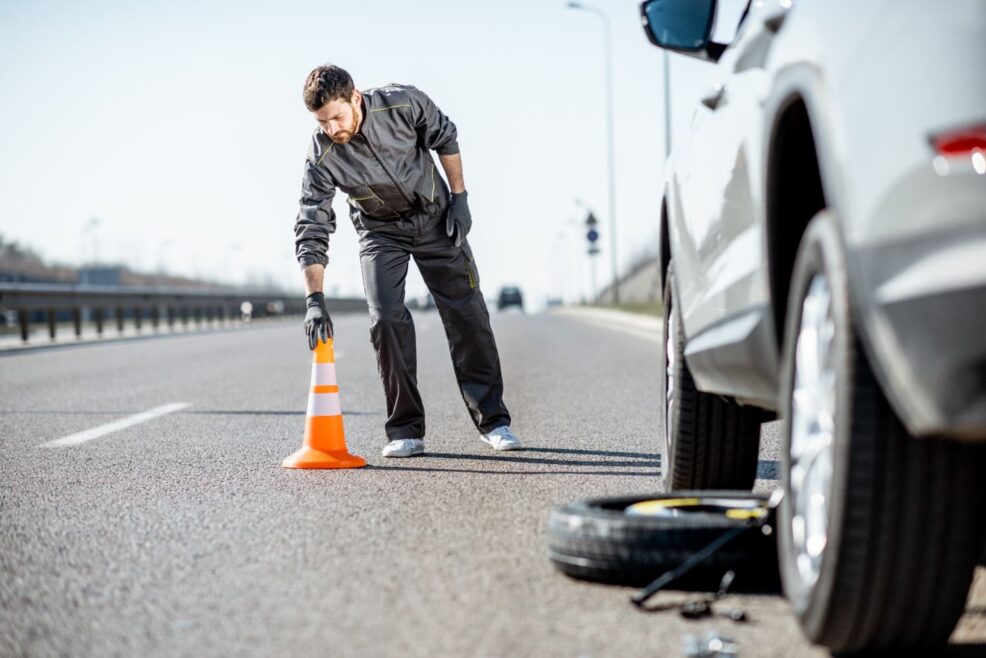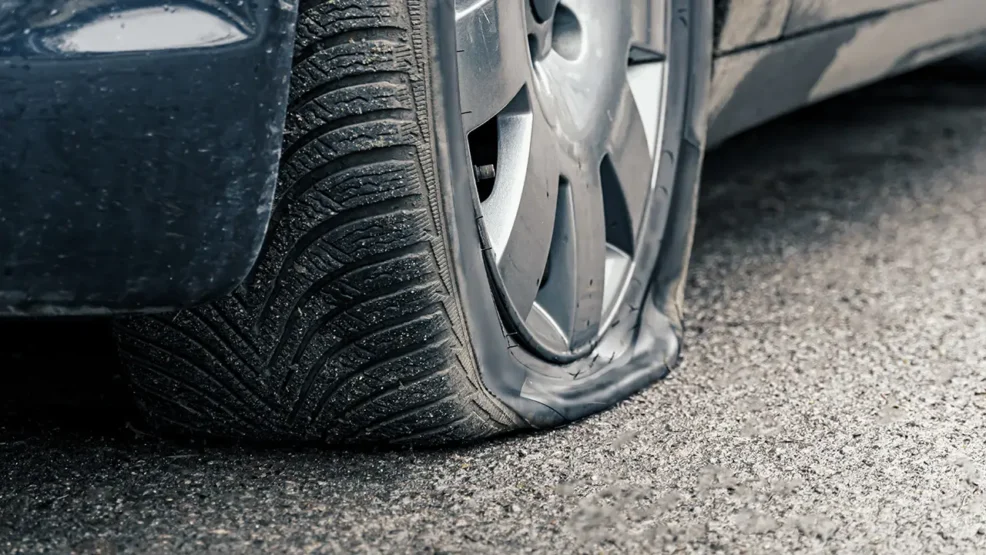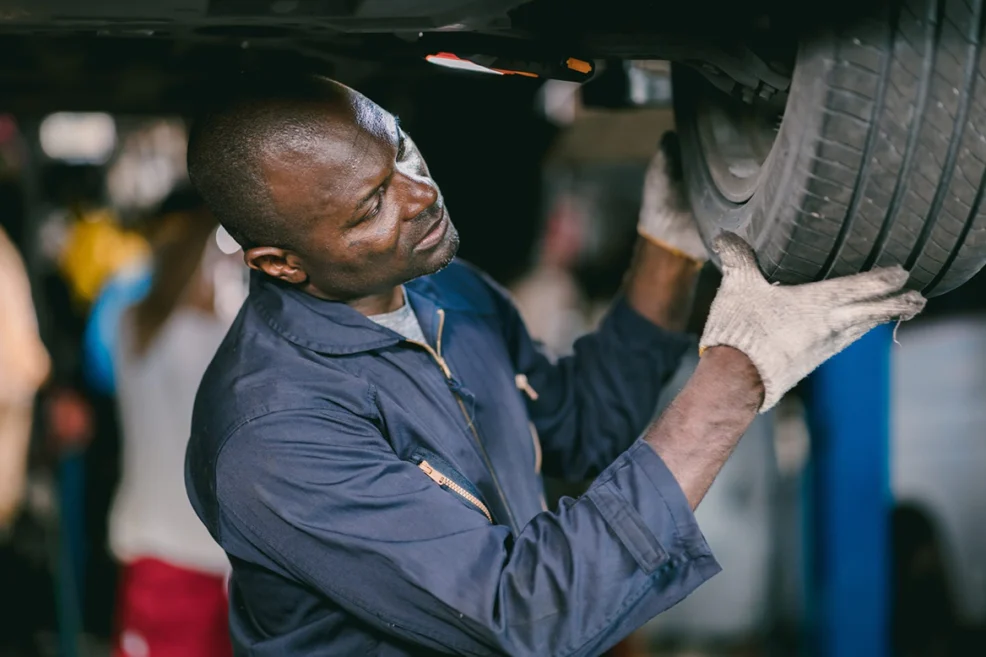A flat tire on the highway is one of the most common yet stressful problems drivers face. Fast-moving traffic, limited shoulder space, and the sudden loss of control create a dangerous scenario. Acting quickly but calmly can make the difference between a safe outcome and a serious accident.
Professional help, such as truck tire repair, may be essential for larger vehicles or when conditions make self-repair unsafe. For everyday drivers, understanding how to react when a flat occurs is equally important. The actions taken in the first few minutes protect not only the driver but also passengers and other motorists.
Preparedness allows drivers to handle the situation with confidence. Knowledge of safe procedures ensures that a simple flat tire does not escalate into something more serious. The following safety tips explain how to react, what to avoid, and how to remain secure until the situation is resolved.
Stay Calm and Maintain Control
When a tire blows out, the immediate sound or vibration often triggers panic. Keeping composure is essential. Grip the steering wheel firmly with both hands and resist the urge to brake suddenly. Abrupt braking shifts weight to the damaged tire, which can cause skidding or a complete loss of control.
Instead, release the accelerator gradually. Slowing down smoothly allows you to maintain balance and steer toward a safer location. Focus on keeping the vehicle straight, especially if the flat occurs on a curve or in heavy traffic.
Signal and Move to a Safe Location
Once speed decreases, activate hazard lights to alert other drivers. Look for the nearest shoulder, exit ramp, or emergency pull-off area. A wide shoulder on the right-hand side of the highway usually offers the safest option.
Avoid stopping in traffic lanes or on narrow shoulders. If no safe shoulder appears immediately, continue slowly until you find a secure spot. Protecting yourself from passing traffic takes priority over stopping instantly.

Position the Vehicle Safely
When you stop, move as far away from the roadway as possible. Angle the wheels slightly toward the barrier or grass to reduce the chance of rolling back into traffic. Engage the parking brake and place the car in park or in gear if using a manual transmission.
Remain aware of surroundings before exiting. On busy highways with little shoulder space, staying inside the vehicle may be safer until professional help arrives.
Make Yourself Visible
Visibility is critical for safety during a roadside stop. Keep hazard lights on continuously. At night, turn on interior lights to increase awareness for approaching drivers.
If you have reflective triangles, flares, or cones, place them at increasing distances behind your vehicle. A common pattern includes one ten feet behind, another one hundred feet back, and a third about two hundred feet behind. This staggered placement gives approaching traffic plenty of warning.
Wear a reflective vest if stepping outside. Many emergency kits include them, and they significantly increase visibility in low light.
Decide Between Self-Repair and Professional Help
Flat tires can often be replaced with a spare, but not every situation allows for safe self-repair. The decision depends on location, weather, traffic conditions, and your own confidence.
When to Change It Yourself
- There is ample space away from traffic.
- You have the proper tools and knowledge.
- Visibility and weather conditions are favorable.
When to Call for Help
- You are on a narrow shoulder or bridge.
- Traffic is too heavy to safely work outside the vehicle.
- The flat involves a commercial vehicle requiring specialized truck tire repair.
Calling roadside assistance or towing is the safer choice in high-risk environments.

How to Change a Tire Safely
If conditions allow, follow proper steps to replace the flat with a spare.
- Gather the jack, wrench, and spare tire.
- Place reflective markers behind the vehicle.
- Loosen lug nuts slightly before raising the car.
- Use the jack on the manufacturer’s recommended lifting points.
- Remove lug nuts and the flat tire.
- Mount the spare, tighten lug nuts by hand, then lower the vehicle.
- Finish tightening in a star pattern to secure the wheel.
Spare tires are designed for temporary use only. Drive cautiously and replace with a full-size tire as soon as possible.
Protect Passengers
Passengers, especially children, should remain inside the vehicle with seatbelts fastened until it is safe to exit. If the shoulder is too narrow, instruct passengers to move behind guardrails or away from traffic only after confirming a clear path.
Provide reassurance to reduce panic. Explain the situation calmly so that passengers know a clear plan is in place.
Preventive Steps Before Long Trips
Preparation reduces the chance of a flat occurring on the highway. Simple habits make a significant difference.
Tire Pressure Maintenance
Check pressure regularly using a reliable gauge. Underinflated tires increase heat buildup and blowout risks, while overinflated tires reduce traction.
Tread Depth Monitoring
Replace tires before tread becomes dangerously thin. Adequate tread ensures grip during rain or sudden maneuvers.
Rotate and Inspect
Rotate tires at regular service intervals. Inspections help catch punctures, cracks, or bulges early.

Special Considerations for Night and Weather
Breakdowns at night or in harsh conditions require extra caution. Poor visibility and slippery surfaces make roadside repairs more hazardous.
- At night, use every available light source, including flares and flashlights.
- During rain or snow, avoid kneeling or standing on slick pavement close to traffic.
- In extreme heat, remain hydrated and limit exposure outside the vehicle.
Adapt safety actions to match the environment for maximum protection.
Conclusion
A flat tire on the highway creates a stressful situation, but safety comes from preparation and composure. Calm reactions, hazard signaling, and careful positioning protect both you and others on the road. Drivers must evaluate whether conditions allow for self-repair or if professional help such as truck tire repair is the smarter option.
Regular maintenance and inspections reduce the chance of facing flats during long trips. Carrying safety gear, maintaining proper tire pressure, and knowing how to respond when trouble arises make every journey safer.
